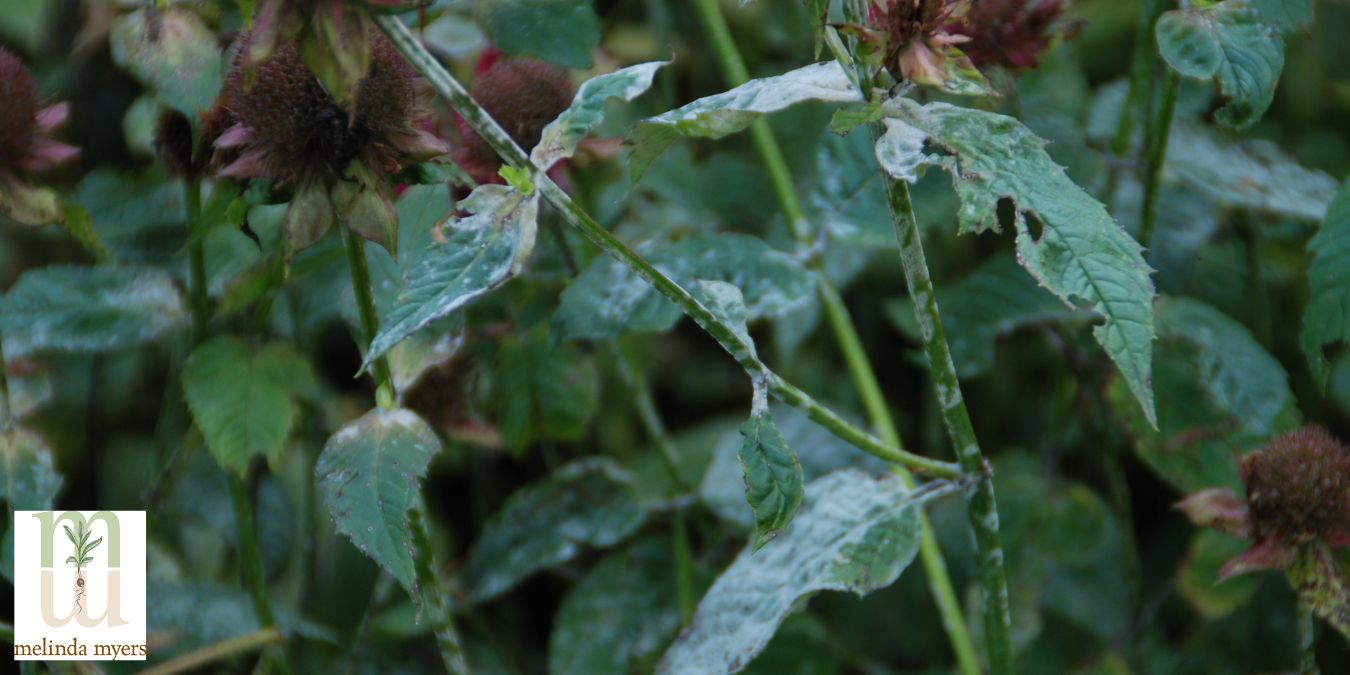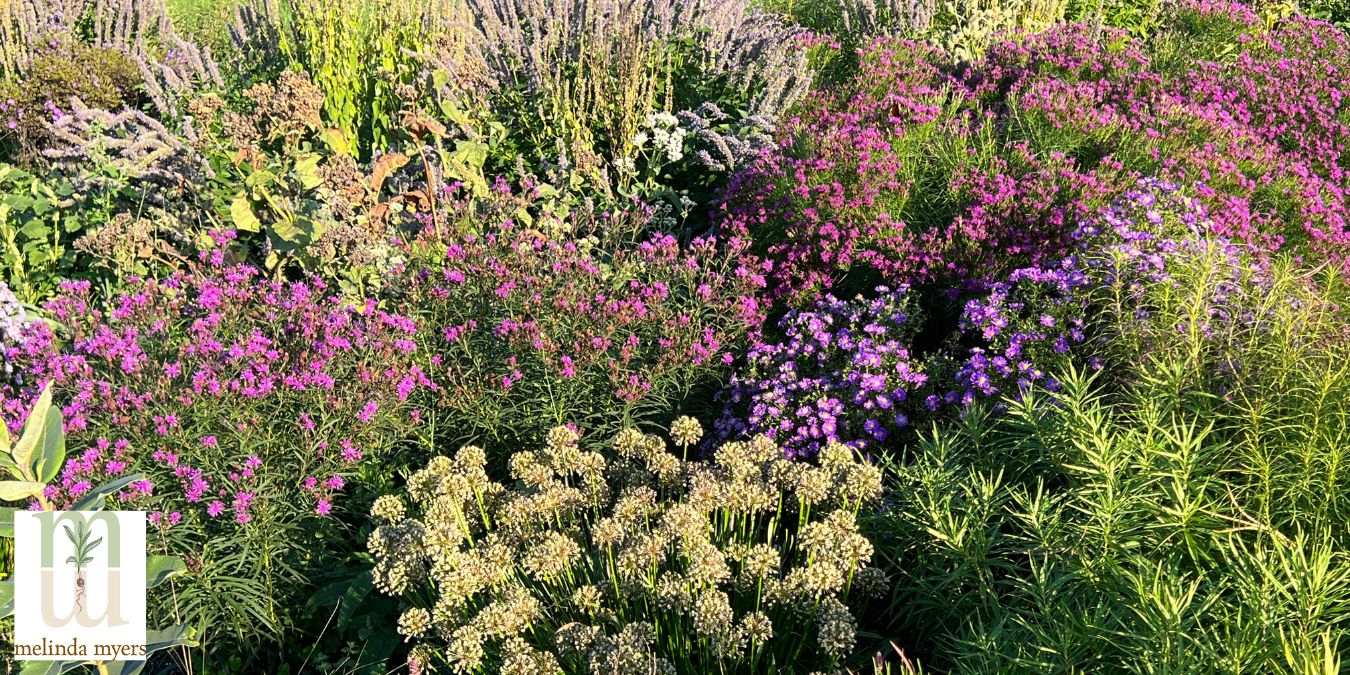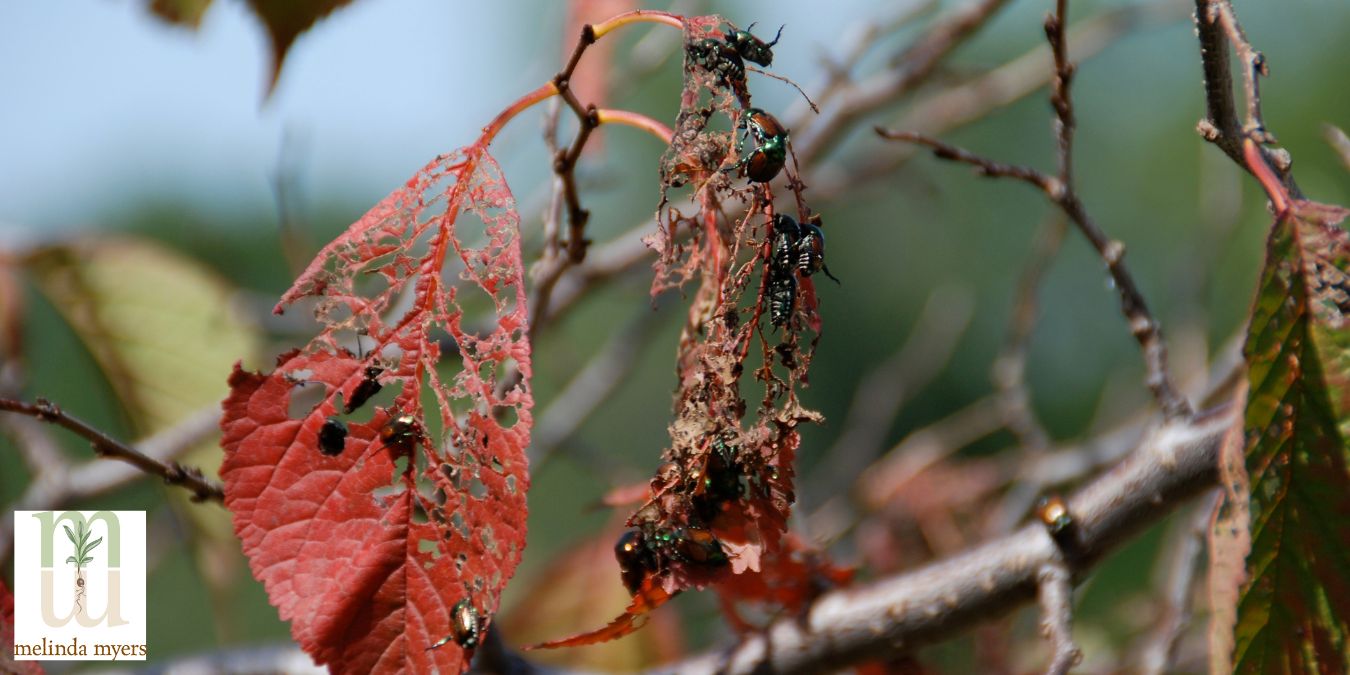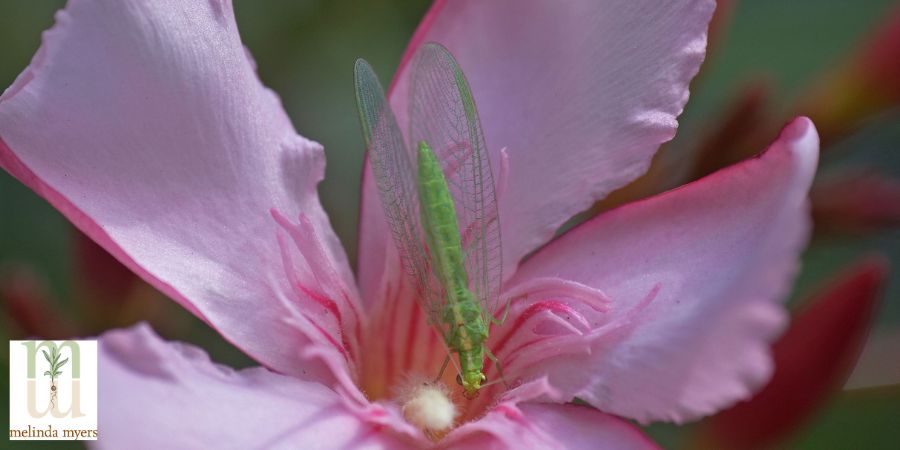Plants Resistant to Pests and Disease
- horticulturist and gardening expertJuly 6, 2024
Boost the health and beauty of your gardens and your gardening enjoyment by avoiding, preventing, and minimizing insect pest and disease problems. A bit of planning and care go a long way in reducing the time and frustration of managing plant problems.
Gardening Strategies to Minimize Problems
Growing a variety of plants not only boosts the beauty of your landscape it also helps minimize pest problems. Various plants have varying degrees of susceptibility to certain insects and diseases. When we create large plantings of the same plants (monoculture) one insect or a single disease can wipe out that whole planting of susceptible plants. Dutch Elm Disease and Emerald Ash borers are excellent examples. Dutch elm disease killed most of the American elms that lined our city streets and filled our landscapes. Emerald ash borer has found its way to North America and is killing millions of city, landscape, and forest ash trees. With diverse plantings, you may only lose a few plants versus a large planting.
Diversifying your plantings also confuses insects that use visual clues to find their preferred plants helping reduce damage. Growing a variety of plants together in a garden or landscape not only helps reduce insect and disease problems but also supports the garden’s overall health and productivity. Companion planting has been around for a long time, and recent research has shed light on the most beneficial partnerships. Some companion plants attract and trap problem insects, others attract beneficial insects, and some add nutrients or improve the soil for healthier plant growth.

Companion planting a peppers and an onions
Selecting disease resistant plants and those less appealing to insect pests is another way to reduce problems in the garden. These plants are not immune but less likely to be infected and if they are attacked, suffer much less damage.
Proper siting and care are also critical to keep plants healthy and better able to tolerate insect damage and resist disease problems. Make sure the plants you select are suited to the growing conditions. Avoid over-fertilization, which promotes lush new growth that is more susceptible to diseases like fireblight and feeding by certain insects like aphids. Using a low-nitrogen, slow-release fertilizer will help you avoid this problem. Milorganite fertilizer releases small amounts of nutrients over several months, encouraging balanced above and below-ground growth.
Managing Common Plant Diseases
Diseases occur when the fungi, bacteria, or virus is present in the environment, the weather conditions are right for that disease to flourish, and there is a susceptible plant in the landscape. Some disease pathogens attack a wide variety of plants while others attack fewer specific plant species. Remove one of these disease-causing factors, and you will eliminate the problem in your garden. Since we can’t control the weather, we need to focus on the other two factors.
Good sanitation can help reduce the risk of diseases. Removing disease-infested plant debris reduces the source of future infections. In some cases, you may need to remove the whole plant to protect the remaining healthy plants from the disease. Keeping gardens weeded is also helpful. These unwanted plants compete with your garden plants for water and nutrients, stressing them and making them more susceptible to disease and insect damage. In addition, some weeds are host plants for diseases and insects that help attract problems to your garden.
Avoiding plants that are very susceptible to diseases commonly found in your area is another way to reduce problems. Your local extension service provides recommendations for plants suitable to your growing conditions and those to avoid due to the high risk of disease.
As gardeners, this is not always easy advice. We all have our favorite plants that may be susceptible to certain diseases, so we decide to grow them in our gardens. Many breeders work on selecting and hybridizing plant varieties and cultivars of plants to be more resistant to certain diseases. Impatiens are a perfect example. Back in 2011, gardeners began reporting outbreaks of downy mildew that suddenly killed impatiens long before the first fall frost. New Guinea impatiens were found to be highly tolerant of this disease. Then breeders introduced Beacon and Imara XDR impatiens as well as the New Guinea hybrids Sunpatiens and Bounce, which are resistant to this disease.
 Fungal disease, Powdery Mildew
Fungal disease, Powdery Mildew
Common Plant Fungal Disease: Powdery Mildew
Let’s take a closer look at the common fungal disease, powdery mildew, with several different species that attack a variety of landscape plants. This disease is easy to spot as it looks like someone sprinkled baby powder on the leaves. If you have grown phlox, bee balm, zinnias, peonies, or lilacs you have likely encountered this disease. For otherwise healthy and established plants, it is more of a cosmetic problem than life-threatening, but why not avoid or limit the impact of the disease whenever possible?
Start by selecting powdery mildew-resistant plants. Most plant tags and catalogs list disease resistance in their plant descriptions. Botanic gardens and extension services often provide lists of disease-resistant varieties. And more and more options are being introduced each year.
Further, reduce the risk of any disease by growing the plants in the preferred amount of sunlight and soil moisture. Enrich your soil with compost to promote healthier plant growth and help suppress some insect pests and plant diseases. You can incorporate compost into your garden preparation with no-dig gardening or by spreading a couple of inches of compost over the soil surface, topdressing, in existing gardens.
Give each plant the space it needs in the garden to allow adequate sunlight and air to circulate around and through the plant. This promotes healthy growth and reduces the risk of powdery mildew and some other diseases. Avoid overfertilization that promotes lots of lush succulent new growth that is more susceptible to this disease.
When you first notice a plant problem look to reliable sources for help. Once you properly identify the problem and the potential impact on the plant you can decide if treatment is desired, needed or would even be effective.
As mentioned earlier, healthy and established plants can usually tolerate powdery mildew, so control is more for aesthetics than the plant’s health. Keep in mind that fungicides typically don’t cure the disease but are used to protect the uninfected plants or parts of the plant. This means regular applications are needed. If you opt to spray look for the most environmentally friendly option and follow label directions. Fungicides can kill good fungi that help decompose organic matter, support plant growth, provide a source of food, and more. Continue monitoring the plants, and don’t be alarmed if you see new symptoms appear right after spraying. When you sprayed, these leaves were already infected but had not yet displayed symptoms.
Regular treatments with a fungicide require more time, effort, and chemicals than I am willing to use. Instead, I prefer to design my gardens around the problem. Consider replacing susceptible varieties with those that are more resistant to the disease. But like you, I do have favorite or pass-along plants that I want to keep despite their susceptibility to powdery mildew. I find growing slightly smaller plants in front of the susceptible ones helps mask the diseased leaves while allowing the flowers to show off their beauty.
Clean up and discard infected plant debris in the fall. Most of us do not have active compost piles that heat up enough to kill disease pathogens and insect pests. Contact your local municipality for guidance on disposing insect and disease infected plant debris.
Managing Insect Pests

Pollinator Garden
Insects are common visitors to the garden. Most insects are good guys pollinating plants, parasitizing or eating garden pests, and helping to decompose organic matter. According to the United States Department of Agriculture, less than 1% of insect species are considered harmful.
Attract more and a wider variety of helpful insects by increasing the diversity of plants grown in your gardens and landscapes. The more beneficial insects that visit your garden the more partners you’ll have for managing garden pests. Include a variety of plants with seeds and berries as well as a source of water and plants that provide shelter to help attract insect-eating songbirds. Ninety-six percent of terrestrial North American birds include insects in all or part of their diet. I love to watch the hummingbirds visit my feeders, nectar on plants, and munch on the aphids that end up on my native honeysuckle vine.
Toads and frogs are also helpful pest managers and are fun to have living in your gardens. Leave some leaf litter in the garden. It makes a nice mulch for our plants conserving moisture, suppressing weeds, and moderating soil temperatures but also creates a damp environment the toads and frogs prefer. Create dense plantings that provide shade and insect hunting grounds for these pest managers. Add a shallow dish of chlorine-free water for drinking and wait for them to arrive.
You will need to tolerate some damage while waiting for the beneficial insects, birds, and toads to find and eat the insects. When we kill insect pests, their food source, these pest managers go elsewhere to dine. I find nature does a much better job than I could ever do managing garden pests.
Avoiding problem plants, those susceptible to common and devastating insect pests when possible, is another important strategy. For example, don’t plant ash trees in your landscape if emerald ash borer (EAB) is a problem in your area. You will either need to protect the tree with regular pesticide applications or lose the ash to this devastating pest. EAB research is ongoing, and it's best to wait for practical solutions rather than to plant a problem.

Japanese Beetle Damage
Some insect pests, like Japanese beetles, feed on hundreds of different plants, making it challenging to grow an insect-resistant garden. Don’t give up hope, as there are plants like ageratum, begonia, celosia, forsythia, weigela, ginkgo, and oaks that are less appealing to Japanese beetles. Just make sure the alternatives you select are hardy in your area, resistant to other common insect pests and disease problems, and are noninvasive.
You can also prevent Japanese beetles and some other insects from damaging certain plants with barriers of floating row covers. These fabrics allow air, light, and water to flow through the plants but prevent some insects from damaging them. Loosely cover basil and beans with a lightweight floating row cover and anchor the edges prior to the Japanese beetles’ arrival. Pollinators do not need access to these two plants, and the fabric prevents the beetles from munching on the leaves. Cover cabbage plants and their relatives at planting with a floating row cover to prevent cabbage worm damage. The fabric prevents the moths from laying their eggs on the plants. When these eggs hatch the worm-like caterpillars start eating the leaves. This non-chemical option allows you to prevent damage and avoid unwanted protein in your coleslaw and steamed broccoli.
Aphids are another common landscape pest with about 1,350 different species in North America. Most are green, but others are white, yellow, red, pink, brown, black, or mottled. These tear-drop-shaped insects have two tail-pipe-like extensions called cornicles on their back end. Aphids use their needle-like mouth parts to puncture plant tissue and sip the sap. They quickly multiply, especially during warm weather, and their feeding causes leaves to turn yellow and brown, curl or disfigure, and stunt plant growth. They excrete the excess as a clear sticky substance called honeydew.
Lady beetles, green lacewings, hoverflies, parasitic wasps, and some diseases help manage these pests in our gardens. Instead of buying and releasing beneficial insects into your garden grow a variety of plants that attract beneficial insects to help manage this and other insect pests.

Lacewing on Plant
If the beneficial insects, birds, and toads are not managing the aphids, consider crushing small populations by hand. Or use a strong blast of water to dislodge many of these pests off the plant. If the plant damage is severe and these methods have not worked, you may opt for an organic contact insecticide like lightweight horticulture oil or insecticidal soap. These products have the potential to kill any insect they contact. But once the spray has dried on the plant any insects walking on the treated plant will not be harmed. Make sure there are no beneficial insects on the plants before you decide to spray. If the good guys are present you want to leave them to their work, eating and managing the aphids.
Get familiar with the common insect pests and diseases in your part of the country. Your local extension service, botanic garden, and arboretum are great resources. Many have websites, brochures, and other resources to help you identify and avoid problems so you can grow a healthy, productive, and beautiful garden in concert with nature.

